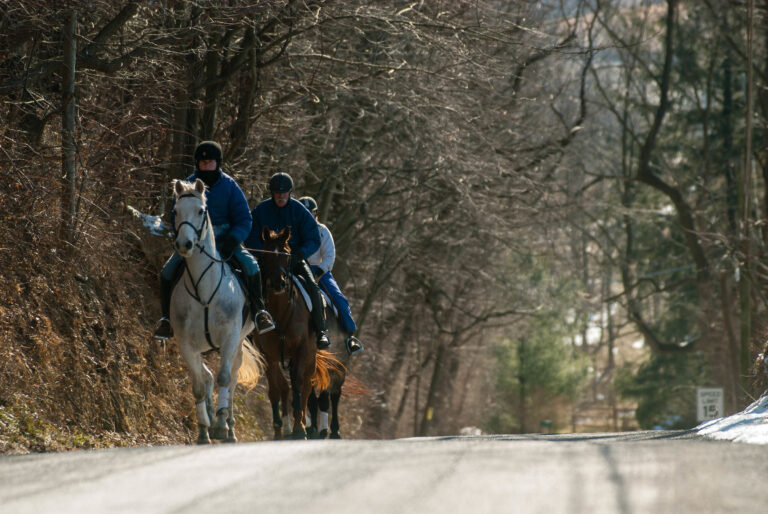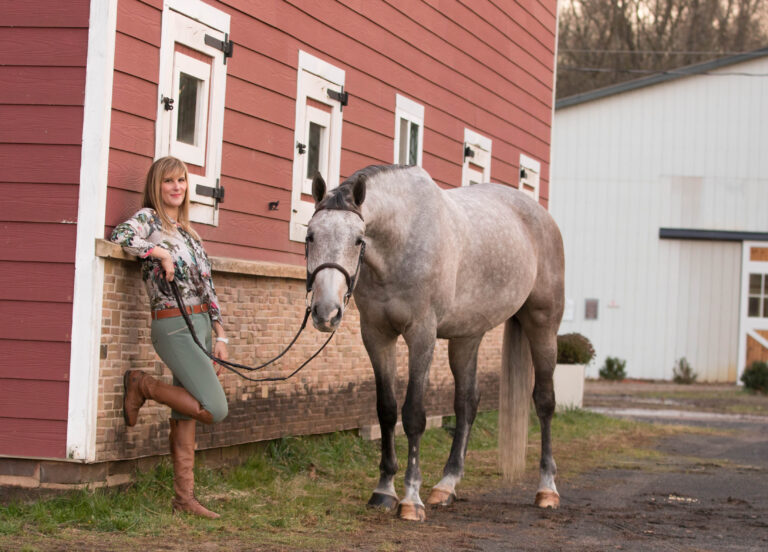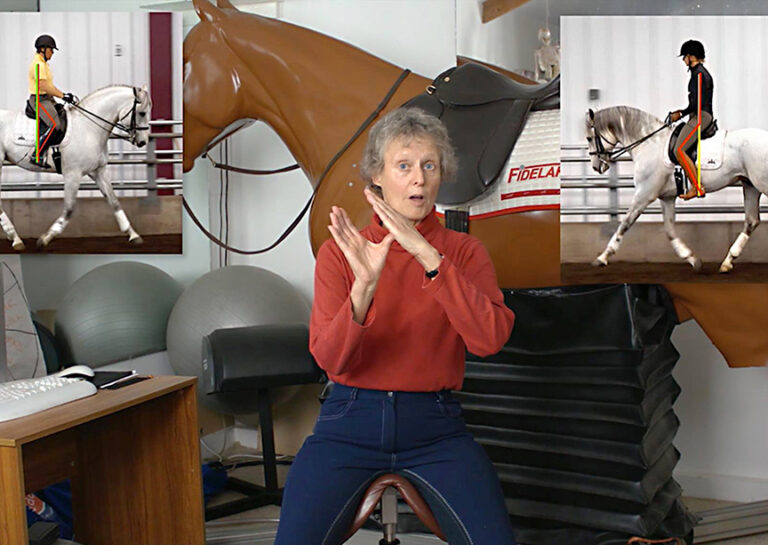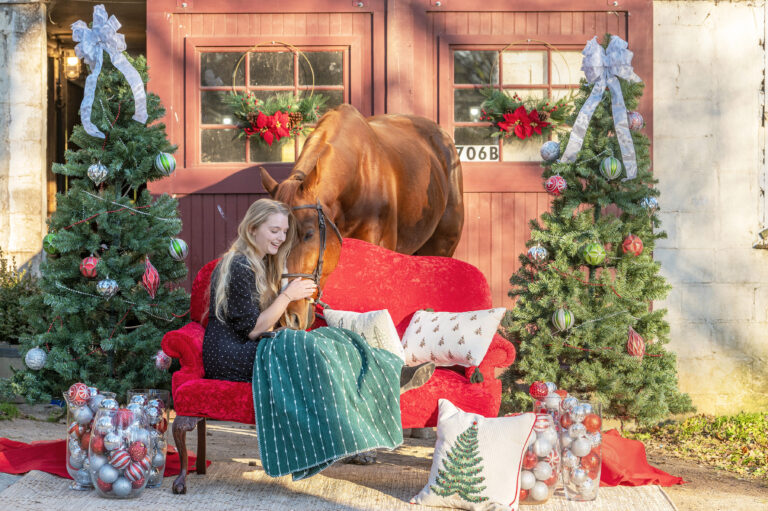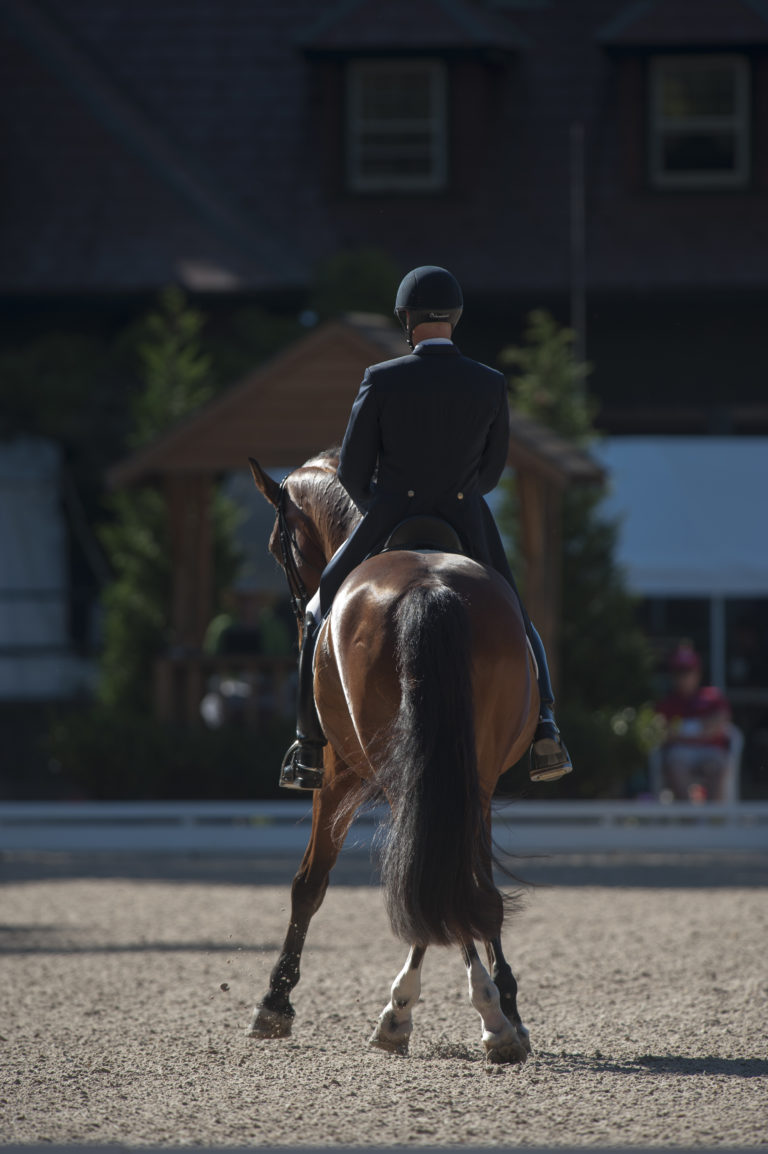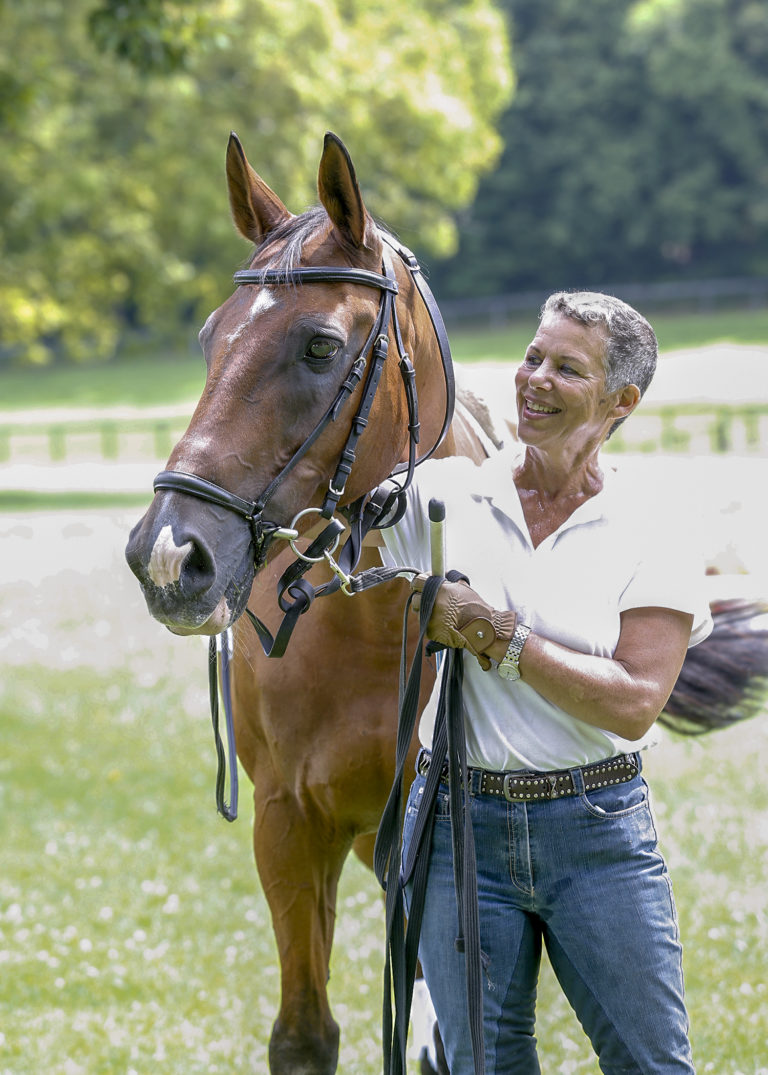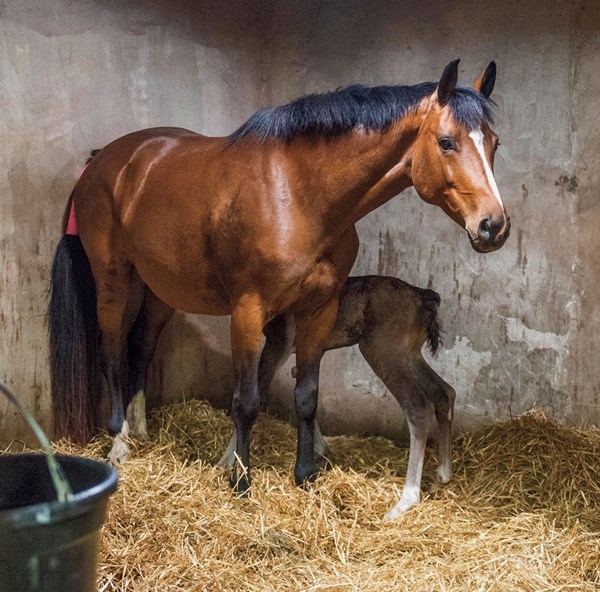
It’s every breeder’s dream: take his or her beloved mare, breed her to a famous stallion and produce a darling foal who goes on to become the next dressage superstar. But between this dream and reality lie a multitude of factors that can dramatically impact the results, not the least of which are considerable investments of time, energy and money. And, technically, while the genetic contributions of both dam and sire are equal, many industry experts believe the impact of maternal strength can easily outweigh even the most popular sire, making the choice of dam critically important to future success. “In general we would think that you get 50 percent from both the sire and dam,” notes renowned sport-horse expert, Grand Prix rider and former USEF Young Horse Dressage Coach Scott Hassler of Chesapeake City, Maryland. “However, many times certain mares [or sires] really dominate what the offspring inherits from them.”
Many things can influence whether or not a mare may prove to be a successful dressage producer, including conformation, movement, temperament, performance and pedigree. But even a mare with the perfect mix of all of these elements may fail to reproduce to lofty expectations. Dressage Today spoke to several sport-horse breeding experts in addition to Hassler, including USEF “R” sport-horse breeding judge Kristi Wysocki and Kevin Reinig of KEFA Performance Horses, about what they look for when considering a mare for breeding and why that resulting foal may or may not turn out to be a winner.
Perfect Proportions

When evaluating a mare for breeding, the first thing Kristi Wysocki, of Elbert, Colorado, looks at is conformation. As she officiated for the world-renowned Dressage at Devon breed show last September, Wysocki not only knows how to spot a pretty face, but also knows how form successfully relates to function. “Ideally, you want to see the horse’s conformation play out in the actual movement,” she says. “If the horse’s conformation is wonderful but he or she doesn’t have correct or quality movement, it doesn’t matter for the purpose of being a dressage horse,” she explained. “The horse must have balance from back to front and have harmony through her topline, frame and overall proportions. The head, neck and shoulders should have smooth connections with correct angles and proportions. The saddle position must be clear and usable, with the back and loin area strong in order to transfer the energy produced from the hind legs forward through the horse’s body. I like to see the hindquarter angles form an isosceles triangle when correct, as this provides the most ideal angles for the best engagement and impulsion to be created. And, of course, the legs must be correct with no serious faults.”
Hassler, who in addition to his USEF coaching duties is a Grand Prix rider and has served for decades on the USEF Dressage Committee, USEF Breeders Committee and chaired the USDF SportHorse Committee, takes a big picture approach. “I’m not one of those people who’s really picky about every little detail of conformation,” he notes. “I look over the whole horse and look for things that jump out at me, good and bad. I also like to do a little fact-finding. I’ll ask, do certain traits that I see in that horse come from genetics? For instance, does a straighter shoulder tend to come from her sire line? If she has already produced foals, are certain traits actually passed on to her offspring? So faults may not necessarily be a ‘yay’ or ‘nay,’ but simple observations based on all of this information.”
All the Right Moves
Nothing turns more heads than an extravagant mover trotting down centerline in the dressage arena. But when it comes to breathtaking movement, it can be easy to incorrectly assume that bigger is always better. “People often make the mistake of looking at quality of the gaits first, but this is actually the last part of the gait that should be evaluated,” says Wysocki. “Quality is just the wow factor. It includes suppleness, swing, elasticity, volume, scope, cadence, uphill balance, power, et cetera. But the first priorities in evaluating gaits must be rhythm and correctness, which have to pass muster or there is no point going any further.”
While good conformation is important, Hassler also believes that lovely looks must translate to actual athletic ability. “I like to see that a horse uses what she has in movement,” he explains. “Does she have the capacity to be expressive? At the same time, I don’t necessarily want to see that expressiveness all the time—I want to see the true gaits. Sometimes when you see big gaits going around at an inspection or in-hand, that’s generated by excitement and not necessarily the real deal, so you can’t get sucked in.
“Basically I want to see a horse who moves with energy, is light-footed off the ground and has some suspension. Suppleness added to that is a plus. But I also try to figure out how that horse would feel to actually ride—she may not be as she first appears,” he said.
Kevin Reinig of KEFA Performance Horses in Rancho Murieta, California, has been involved in breeding top dressage horses for 25 years. His wife, Ericka, is a competitor on the California CDI circuit, and a multitude of athletes from the KEFA breeding program have gone on to find success in the dressage ring both on the West Coast and on the national stage, from grassroots to FEI-level competition. “Movement is definitely important, but it’s not all about flash,” says Reinig. “I look for elasticity and three good gaits, in particular a good canter and a good walk. You can improve a trot, but it’s much more difficult to improve a poor walk or canter. I like to see good hock action and that the hind leg naturally comes up under the horse when she moves, as well as a natural tendency to sit.
“Of course, a good front leg is important, but in our experience if you don’t have a good hind leg to support that big movement up front, it’s difficult to eventually get them to sit, control and collect all that power,” he continues. “Some of this depends upon your breeding goal: If you’re only looking for a nice lower-level horse, you don’t have to worry so much about containing that flashy movement, and it can work out great. But once you start with collected work, particularly at the FEI level, you have to remember that aside from a couple of lengthenings, there’s not a lot of extravagant movement going on in the Grand Prix test—it’s all about sitting, collection and transitions.”
A Beautiful Mind
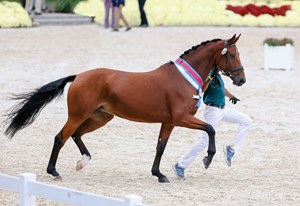
Having bred and trained successful equine athletes, from sport-horse breeding and young-horse futurity champions to international CDI mounts, Reinig believes that temperament is critical in evaluating a mare. “No doubt about it, I want rideability and trainability in a broodmare prospect,” he explains. “I’ll take a mare with average conformation and movement with great rideability and trainability every single time over an extravagant mover with perfect conformation who you can’t do anything with. If you can’t get her trained up the levels, it doesn’t matter how flashy or beautiful she is, she’ll never make it as a competition horse. The bottom line is you have to be able to ride and train a horse for sport. It’s useless to have a big mover who looks great running around the field.”
For Wysocki, rideability is so important that she calls it “the fourth gait,” but she notes that its parameters can vary based upon the level of competition and expertise of the rider. “Olympic-level riders can often handle a more difficult temperament in their horses,” she says. “However, when choosing a mare I think it is vital that she has a good demeanor, likes people and enjoys her job. This doesn’t mean she can’t be a bit hot or a little spooky. But she still must be willing to trust and depend upon the rider and perform. Often I hear people say, ‘My mare was too difficult to ride, so I decided to make her a broodmare,’ and I believe this can be a mistake because the trainability of the resulting youngsters could also become an issue.”
Blue-Ribbon Winner
The final proving ground for success in the sport of dressage is within the arena itself. “I think it’s very helpful information for a mare to have a show record,” says Hassler. “It tells us that she was sound, that she is rideable and trainable and capable of all the things that we’d also like for her offspring to eventually do. While a proven competition record is a major plus, it’s not everything. In the end, it’s how her foals perform that tells you the value of a mare, not her own sport record.”
Reinig agrees. “I prefer for a mare to have a competition record. But if, for some reason, she doesn’t, yet her offspring are succeeding in the show ring, I prefer that even more,” he explains. “You can have the best competition mare in the world who doesn’t produce anything worth a darn, while some mares never saw an arena but produce consistently outstanding performers. So ultimately they have to produce excellence, not necessarily have achieved it themselves.”
All in the Family
A set of registration papers full of notable names can certainly help buoy a mare to royal status. “It goes without saying that bloodlines are important,” Wysocki notes. “The top breeders of the world don’t continue to breed certain lines for no reason. Specific bloodlines are seen time and time again because of the excellence of their prodigy generation after generation, and this consistency and quality are very important to any breeding program.”
In Hassler’s experience, a mare’s family history can help give a breeder a good idea of what she’s capable of reproducing. “If I’m looking at a young maiden mare who never competed and hasn’t had a foal, I’ll look at her pedigree and see what her sire, dam and siblings have done. Being familiar with bloodlines and what her genetic tendencies are can give clues to what she may produce.”
But Hassler has also seen how some breeders place too much emphasis on fashionable names that are all the rage at a particular time, but not necessarily proven over time. “Obviously the safest route for a breeder is to breed the mare to a proven sire, and that’s not necessarily the one being talked about all over the internet that week,” he explains. “In the end, breeding isn’t about the mare or the stallion—it’s about the foal they produce, and it’s a gamble. So if someone has a maiden mare and he’s not so sure how to best select a sire for her, I definitely recommend going with a proven sire who matches her strengths and weaknesses well to give the best chance at success. The last thing I would do is choose a hot shot young stallion who doesn’t have any proven offspring yet. It’s too much of a risk. Leave it to the very experienced breeders to take that chance.
“On the flip side, I tend to advise clients who want to invest in mares to purchase 8-or 9-year-old mares who have produced something already going under saddle who we can evaluate,” he continues. “I prefer to purchase mares who are tried and true, having already produced what I want. I would be hesitant to buy a champion 3-year-old filly with a red-hot pedigree who hasn’t been bred yet. But these days it’s so easy for people to get sucked into the excitement of finding the next big thing.”
Universal Principles
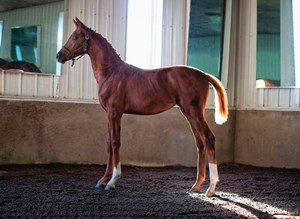
With dressage horses representing so many different breeds and studbooks, there are specific traits that tend to be tied to each that an aspiring breeder may seek to emphasize with a potential broodmare. However, as a dressage sport-horse judge and a rider and trainer, Wysocki is trained to look at the horse as a dressage athlete or dressage breeding stock, and her standard of requirements doesn’t change from breed to breed. “This is the only way to reward the horses designed more for dressage. There are many horses of many breeds who are being bred as modern types, with more rectangular frames and lighter builds, making them super choices for this sport,” she says. Both Hassler and Reinig agree that regardless of what breed society or studbook name is stamped on registration papers, the principles for a successful dressage athlete are for the most part universal.
The Breeders’ Trap
As our experts have noted, even with the best of intentions, the breeding game is a gamble, and they’ve seen plenty of mistakes made. For Reinig, “The biggest mistake I see is going with what’s popular and not what’s right to complement your mare. For example, Totilas is an incredible stallion, but maybe he’s not the best choice for your unproven mare.”
Wysocki firmly believes that just because a mare can physically produce a foal doesn’t automatically mean she should. “The biggest mistake I see people make is breeding their mare simply because she has reproductive organs,” she explains. “Often the mare is retired because of navicular or blown suspensory due to soft pasterns, and the owner breeds her because he or she can’t ride her anymore. Or they breed the mare because she was too difficult under saddle. Neither of these mares should be bred, as the problem is likely to be passed forward to the next generation.”
“We all love our horses, and the breeding game is an emotional process,” says Hassler. “We’re proud of our mares, and can be blinded by their faults because we want to believe so badly that it will work out in producing amazing foals. But sometimes it doesn’t, and this is what I call the ‘Breeder’s Trap.’ If breeding was so easy that simply having a good mare guarantees a good foal, then we’d all easily have wonderful mounts. But it doesn’t work that way.
“I’ve had so many gorgeous mares standing in front of me, stunning mover, great pedigree, and you think it’s a slam-dunk to create the next Olympic champion—but she doesn’t produce anything,” he continues. “For whatever reason some incredible mares don’t reproduce themselves and some ugly-duckling mares produce incredible horses. So breeders can’t get into the trap of years and years of hardship by taking a mare who only produces average or below-average offspring, yet they keep trying over and over and blame everything but the mare, such as saying ‘I just haven’t found the right stallion for her yet.’ It’s emotional and expensive, and we can be unwilling or unable to admit the simple fact that our mare does not produce well. Sometimes you just have to cut the ties.”
Know What You’re Getting Into
As with so many horse-related endeavors, knowledge is power when considering a mare for breeding. “Getting help and advice is so important even for experienced breeders because, as I said, it’s easy to get blinded by your own mare,” says Hassler. “Get an independent opinion for an objective perspective. Gain as much experience as possible: learn how sire and dam lines tend to reproduce and the likelihood of how certain traits may or may not be able to be improved or amplified. Go to inspections and keurings to learn about breed characteristics. Do lots of research—the more information you have, the better.”
The other issues people need to understand are the difficulties, commitments and expenses of breeding horses. “Often I hear people say they will breed their mare because it is too expensive to buy a 3-or 4-year old [or older horse],” says Wysocki. “They don’t realize the immense expense they are about to undertake for a minimum of three years with huge risks of things going very wrong before they get to the point of the youngster being usable as a riding horse. So I strongly encourage someone who is inexperienced with breeding to seek advice from knowledgeable and experienced people to really understand what they are about to take on.”
Hassler sums it up well, saying, “At the risk of sounding like a broken record, remember that it’s not about the mare or stallion nearly as much as it is about what the result of the breeding is as an athlete. Premium foal awards at inspections are great, but a lot of foals are really pretty. Ultimately, is that mare producing offspring that perform under saddle? We’re talking about producing a riding horse, not just a pretty baby. If she does that, then she’s a good mare.”
Stack the Odds in Your Favor
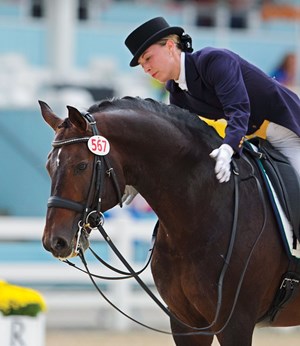
By Christine DeHerrera
Every year after the stallion shows in Europe, desirable young stallions catch breeders’ imaginations and book upward of 400 mares in a single season. These youngsters are untested as sires. The availability of frozen semen allows North American breeders to pursue these young stallions. However, if you are a mare owner with just one or two mares, a proven, older stallion may be the most effective route to breeding success.
For 40 years, Iron Spring Farm (ISF) has been making the best bloodlines available through stud services and sales to North American breeders. The ISF stallions have produced competitors and winners from the Olympics to the World Equestrian Games and beyond.
ISF owner and breeder, Mary Alice Malone, shares five factors to consider when choosing a stallion for your mare.
Proven in Sport
Pirouettes, tempi changes and half-pass are developed through years of training. Stallions that have successfully competed through the FEI levels exhibit not only talent for the sport, but the physical and mental soundness required for the rigors of competition and daily work. Success in sport is a prime indicator of a quality individual and good genetics.
A stallion with many sons and daughters competing at the top levels will be a good addition for your breeding program. The versatility and overall athletic ability of a bloodline is demonstrated by offspring that are competitive in a variety of disciplines, including eventing, hunters, jumpers and driving. With a proven stallion, your breeding/training program has the advantage of versatility and provides you with the ability to sell in a broader market.
A highly functional equine athlete will always find a job. For example, Sir Sinclair, currently the No. 1 USEF-ranked sire of dressage horses, has numerous FEI dressage offspring as well as successful hunters, jumpers, eventers and combined driving athletes. Contango, Preferent, the No. 2-ranked USEF sire of dressage horses, has sired international Grand Prix dressage horses along with top competitors in the other Olympic disciplines. Consul continues to be one of the leading sires at ISF and is recognized for producing remarkable athletes for every discipline.
Rideability
Young horses with great conformation and quality movement often find early success in the keurings and breed shows. As they continue to mature through the levels, the truth of their potential is revealed. Horses who like to work and who enjoy new challenges have the rideability required for high performance.
When foal crops reach the FEI level years later, specific stallions stand out as producers of winning attitudes. Along with soundness, rideability and temperament may be the most important factors when producing horses. “Both amateurs and professional riders want horses who are easy to train and a joy to ride. The horse must enjoy his work,” Malone explains.
Movement and Biomechanics
Stratospheric movement is becoming the norm at international horse shows. Even local shows now require three very good gaits. It’s easy to see a flashy front end, but what’s happening behind? Does the stallion produce horses who carry the weight behind? This tendency makes collected work much easier and is a requirement for FEI levels. Sires producing horses with a great hind end can make a breeder’s job a bit easier. While not all horses will ascend to Grand Prix, striving for this worthy goal and its completion is especially satisfying. “For a breeder to see his or her horse performing at a show is rewarding,” Malone says. “A horse sired by your stallion showing Prix St. Georges or above is exhilarating.”
Soundness
Certain bloodlines are known for soundness, meaning horses with long competition records and retiring sound in the late teens, even the early twenties. For breeders with modern, elegant mares, Malone suggests breeding back to a stallion who is a generation or two older in type to maintain good temperaments, athletics and soundness. “The older types had to be the whole package,” she explains.
Marketing
Regardless of whether you plan to keep or sell the product of your breeding program, embrace the value of stallion marketing. Whether it is magazine advertisements or online videos, stallion promotion adds value and credibility to your breeding program. Malone explains, “A stallion owner showcasing your foal’s brothers’ and sisters’ achievements creates awareness and excitement for the bloodlines and the sire.”
When you’re ready to produce the foal and future dressage partner of your dreams, do your research and study bloodlines, keuring results and statistics. Then remember to add that extra something that all serious breeders use to make a final decision—the hunch. Malone remembers, “With Roemer and Contango, I had a good feeling. You look them in the eye and know they are going to be great.”


